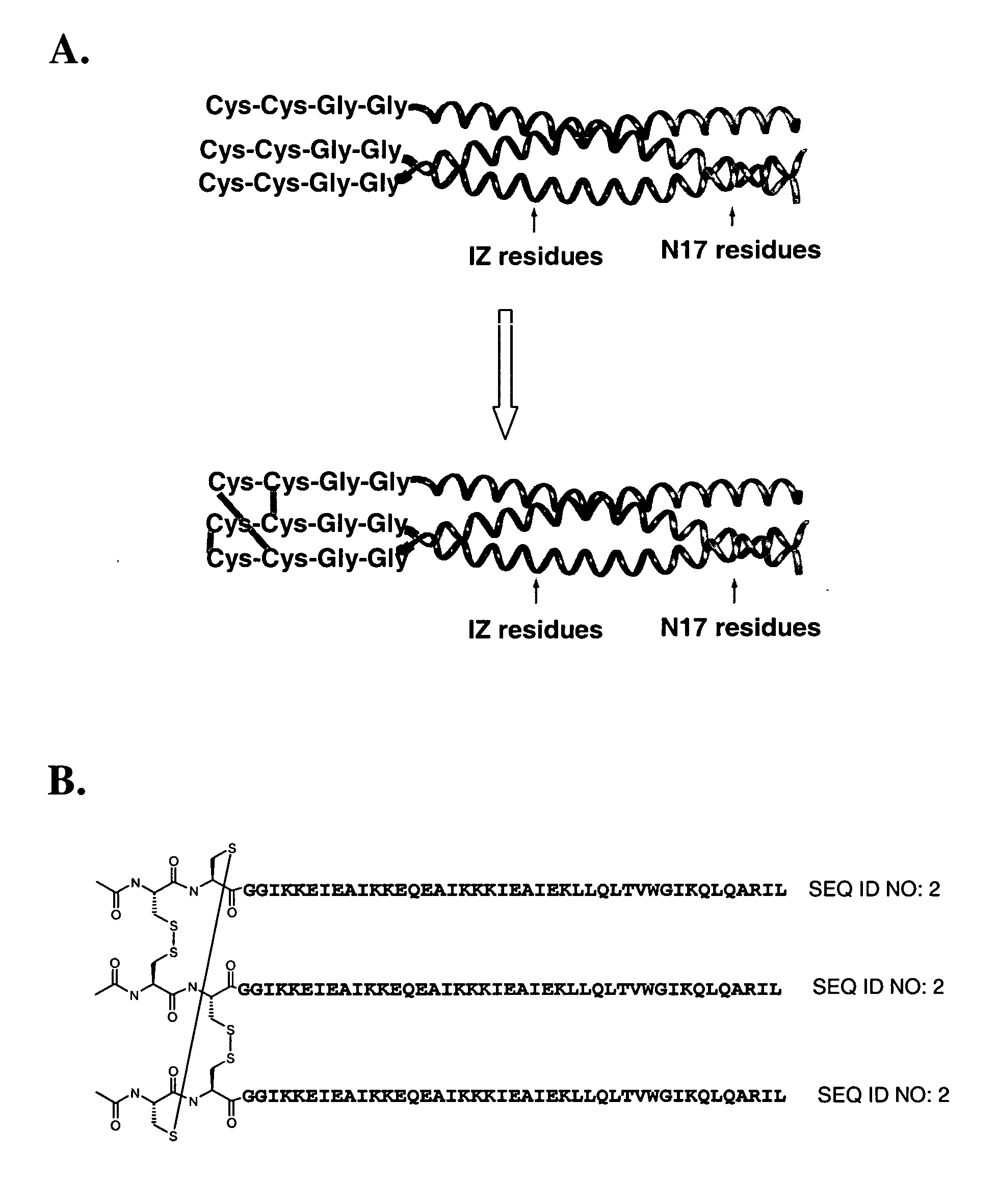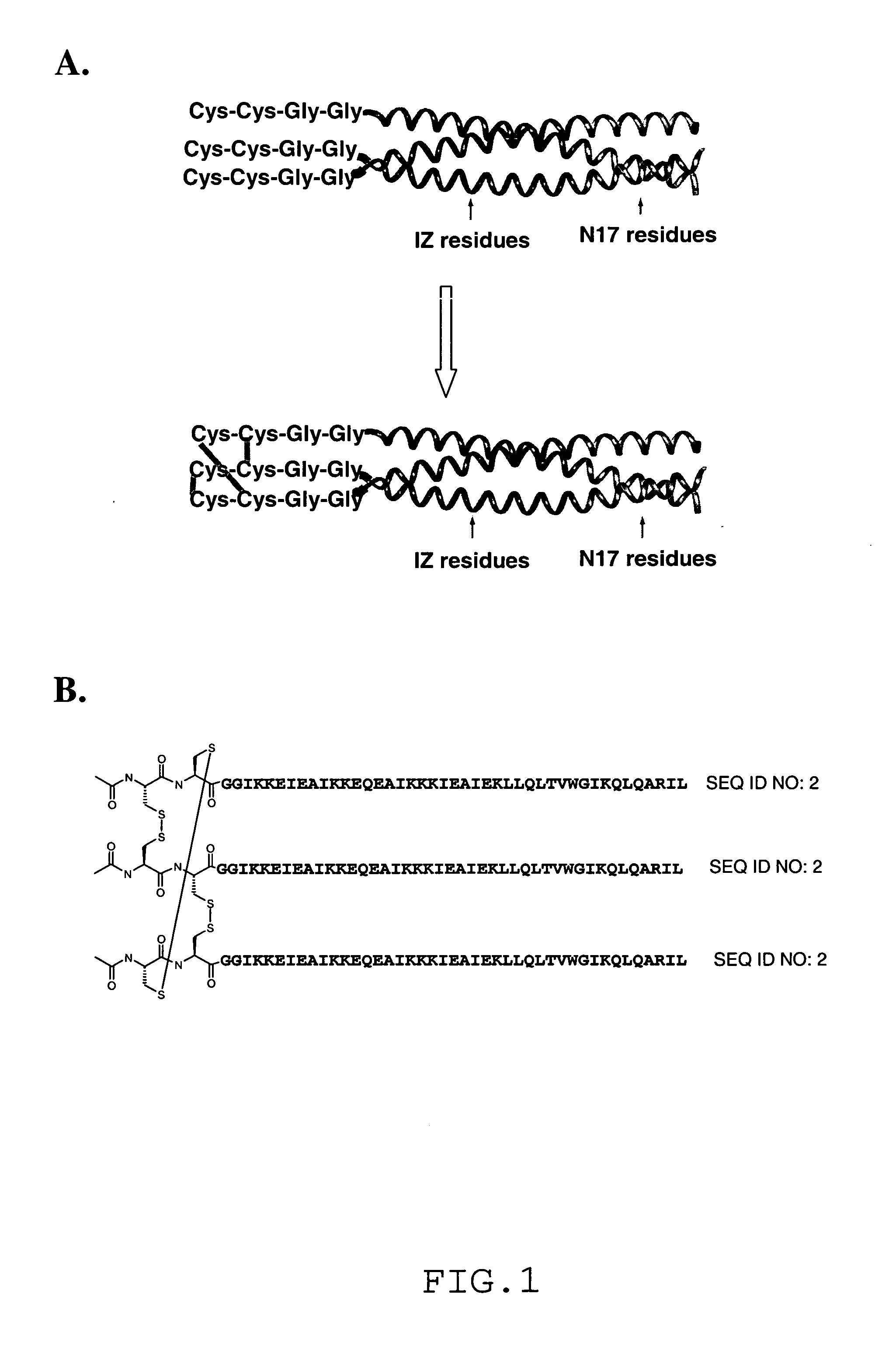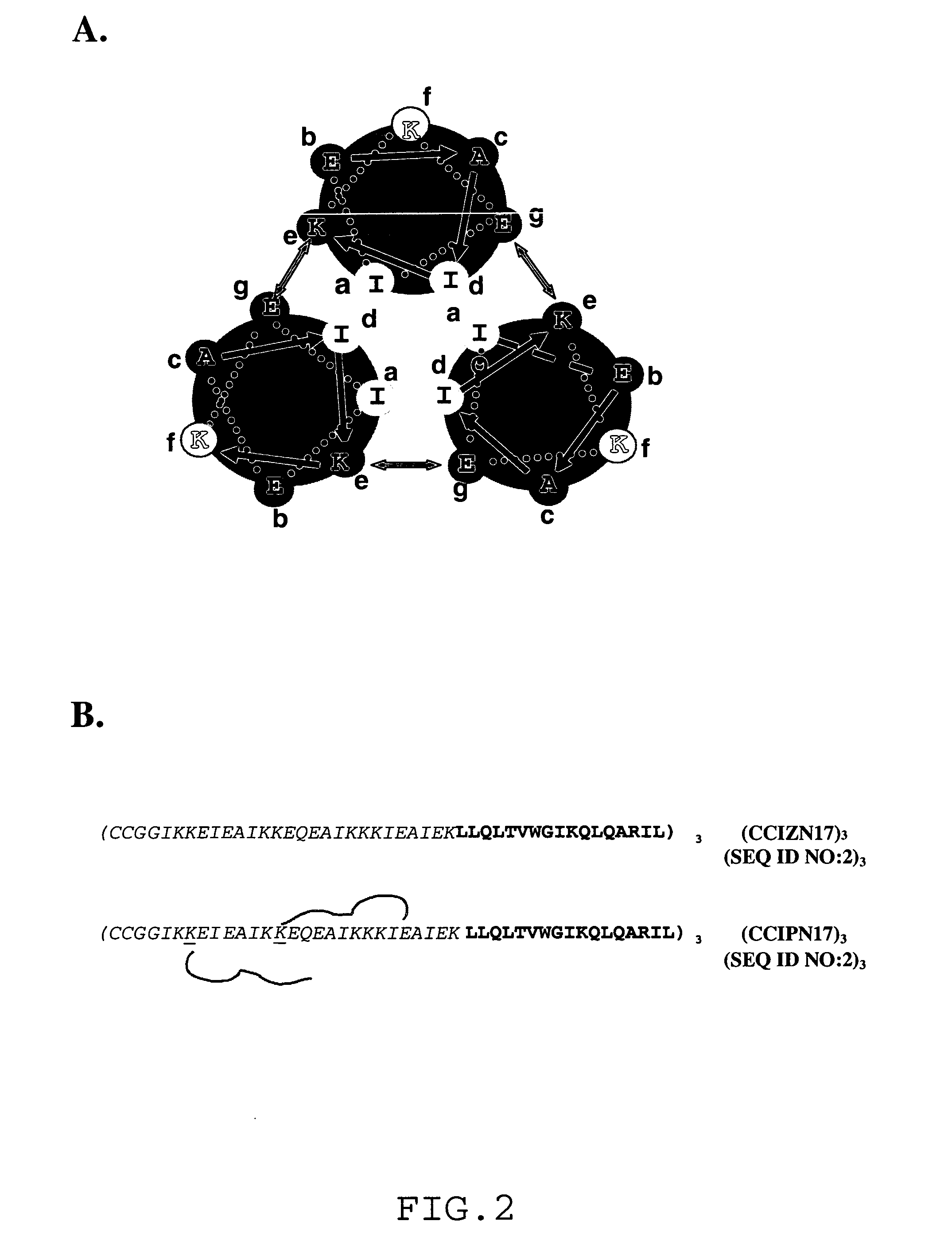Method for Shielding Functional Sites or Epitopes on Proteins
a functional site and protein technology, applied in the field of protein functional site shielding, can solve the problems of limited vaccine efficacy, and achieve the effect of reducing or suppressing unwanted biological responses
- Summary
- Abstract
- Description
- Claims
- Application Information
AI Technical Summary
Benefits of technology
Problems solved by technology
Method used
Image
Examples
example 1
Use of SMW PEG to Shield Undesired Epitopes: Design of a SMW PEG-Derivatized HIV Vaccine
[0084]This example provides one application of the present invention contributing to the field of HIV vaccines. Engineered peptides were previously designed for use as subunit vaccines that represent mimetics of the trimeric coiled-coil of the N-helix of HIV gp41 (see U.S. Provisional Patent Application No. 60 / 576,062 and 60 / 636,724; supra). These subunit vaccines are chimeric peptides comprising a soluble designed trimeric coiled-coil (“scaffold” region), a portion of the N-helix coiled-coil of HIV gp41 and a covalent stabilization moiety for the formation of interchain covalent bonds. An example of one such mimetic is schematically drawn in FIG. 1A, representing the covalently-stabilized, trimeric coiled-coil designated “(CCIZN17)3.” The chemical, structural representation of the disulfide bonds covalently-stabilizing the three chimeric CCIZN17 peptides within (CCIZN17)3 [SEQ ID NO:2]3 is shown...
example 2
Immunotherapy of Alzheimer Disease
[0104]Synthesis of PEG236-Aβ1-42 (SEQ ID NO:4; see FIG. 5C)—The peptide was synthesized by solid phase on a ABI433 Synthesizer (Applied Biosystems) by using standard Fmoc / t-Bu chemistry. The resin used was a prederivatized Fmoc-Ala-ALH-Champion, 1% cross-linked (Biosearch Technologies, Inc.), a PEG-PS based resin derivatized that yields a carboxylated alanine. All the acylation reactions were performed for 60 minutes with 8-fold excess of activated amino acid over the resin free amino groups. Amino acids were activated with equimolar amounts of HATU (O-(7-azabenzotriazole-1-yl)-1,1,3,3-tetramethyluronium hexafluorophosphate) and a 2-fold molar excess of DIEA (N,N-diisopropylethylamine). The side chain protecting groups were as follows: tert-butyl for glutamic acid (E), aspartic acid (A), tyrosine (Y) and serine (S); trityl for histidine (H), asparagine (N) and glutamine (Q); tert-butoxy-carbonyl for lysine (K); and, 2,2,4,6,7-pentamethyldihydrobenzo...
example 3
Small MW PEGylated Vaccines Targeting the 4E10 / Trp-Rich Region of HIV-1
[0110]The structure of the Trp-rich region within HIV-1 gp41 which binds the neutralizing antibody 4E10 (Salzwedel, K. et al., 1999, J. Virol. 73:2469-80) has been determined within a lipid-mimetic environment by Schibli, D. J. et al. (2001, Biochemistry 40:9570-8). The amino acid residues that contact the 4E10 antibody have also recently been disclosed (Cardoso, R. et al., 2004, supra). These contact residues define the water-facing side of the peptide in the structure (see FIG. 6A). In FIG. 6A, the 4E10 binding residues are underlined and include Trp residues at position 672 and 680, while the membrane-facing Trp residues are double-underlined and located at positions 666, 670 and 678.
[0111]A desired α-helical conformation of the 4E10 epitope can be obtained by grafting the 4E10 epitope onto the surface of a GCN4 leucine zipper (O'Shea, E. K. et al., 1989, Science 245:646-8), in analogy to Sia, S. K. and P. S. ...
PUM
| Property | Measurement | Unit |
|---|---|---|
| Mass | aaaaa | aaaaa |
| Volume | aaaaa | aaaaa |
| Volume | aaaaa | aaaaa |
Abstract
Description
Claims
Application Information
 Login to View More
Login to View More - R&D
- Intellectual Property
- Life Sciences
- Materials
- Tech Scout
- Unparalleled Data Quality
- Higher Quality Content
- 60% Fewer Hallucinations
Browse by: Latest US Patents, China's latest patents, Technical Efficacy Thesaurus, Application Domain, Technology Topic, Popular Technical Reports.
© 2025 PatSnap. All rights reserved.Legal|Privacy policy|Modern Slavery Act Transparency Statement|Sitemap|About US| Contact US: help@patsnap.com



